Want to know how Trump views the office of the presidency? Look at his interior design.
Plus: The torch for the 2026 Winter Olympics was designed to show off the flame
Want to know how Trump views the office of the presidency? Look at his interior design.
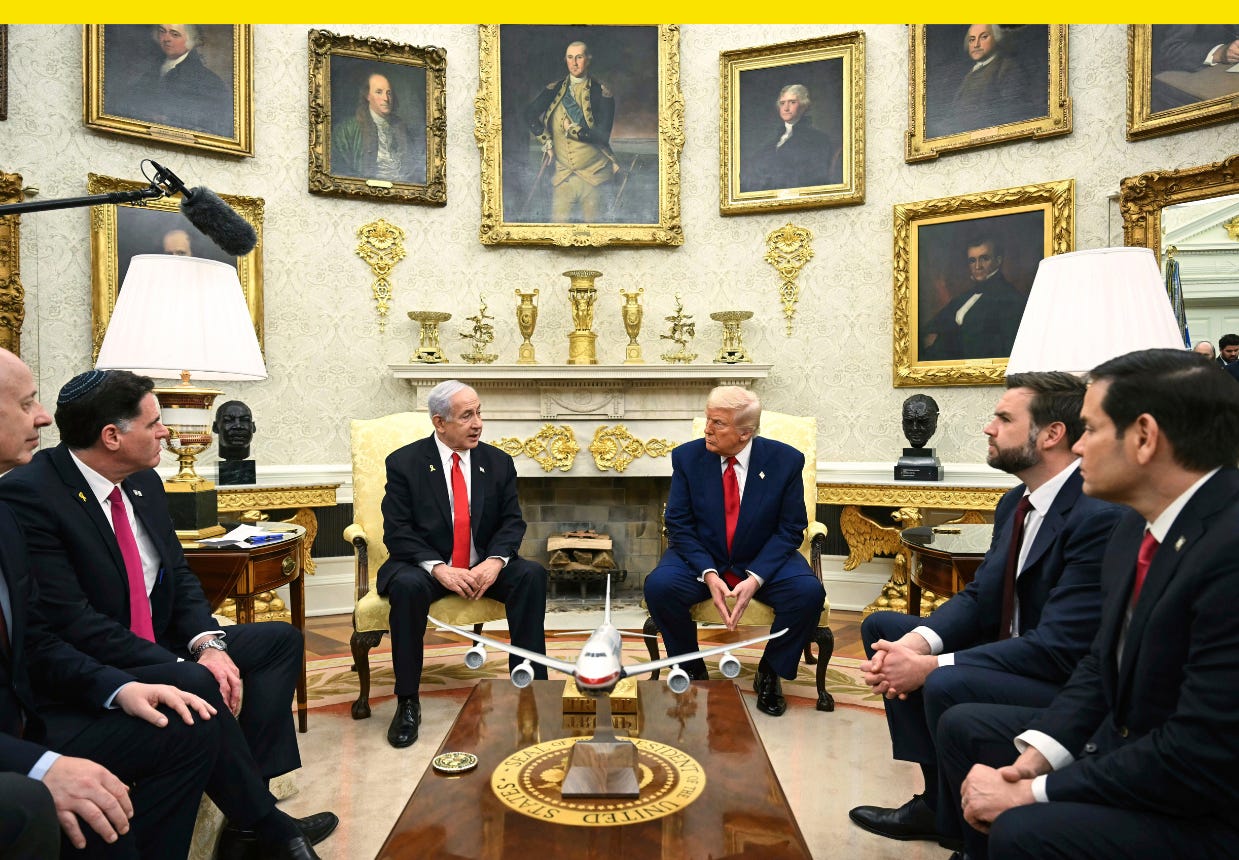
When former President Barack Obama joked at the 2011 White House Correspondents’ Dinner about then-“Celebrity Apprentice” host Donald Trump being elected president, he showed an illustration of America’s presidential residence reimagined as a Trump-managed hotel, casino, and presidential suite. There were gold columns, bathers lounging in a hot tub on the North Lawn, and a neon sign on the facade that said “the White House” underneath a Trump logo.
“He certainly would bring some change to the White House,” Obama said. The idea that Trump would bring his garish, gold aesthetic to the presidency was at the time laughable, but Trump’s the one laughing now.
Trump certainly has brought change to the White House since returning, and on a tangible, visible level too. Though there’s no hot tub on the North Lawn yet, Trump is remaking the physical office to an extent he didn’t in his first term. His replacing of a painting of Obama with a painting of himself last week put an exclamation point on several month’s worth of redecoration, and it communicates a simple message. Want to know how Trump views the office of the presidency as he reaches 100 days into his second term? Look at his physical office.
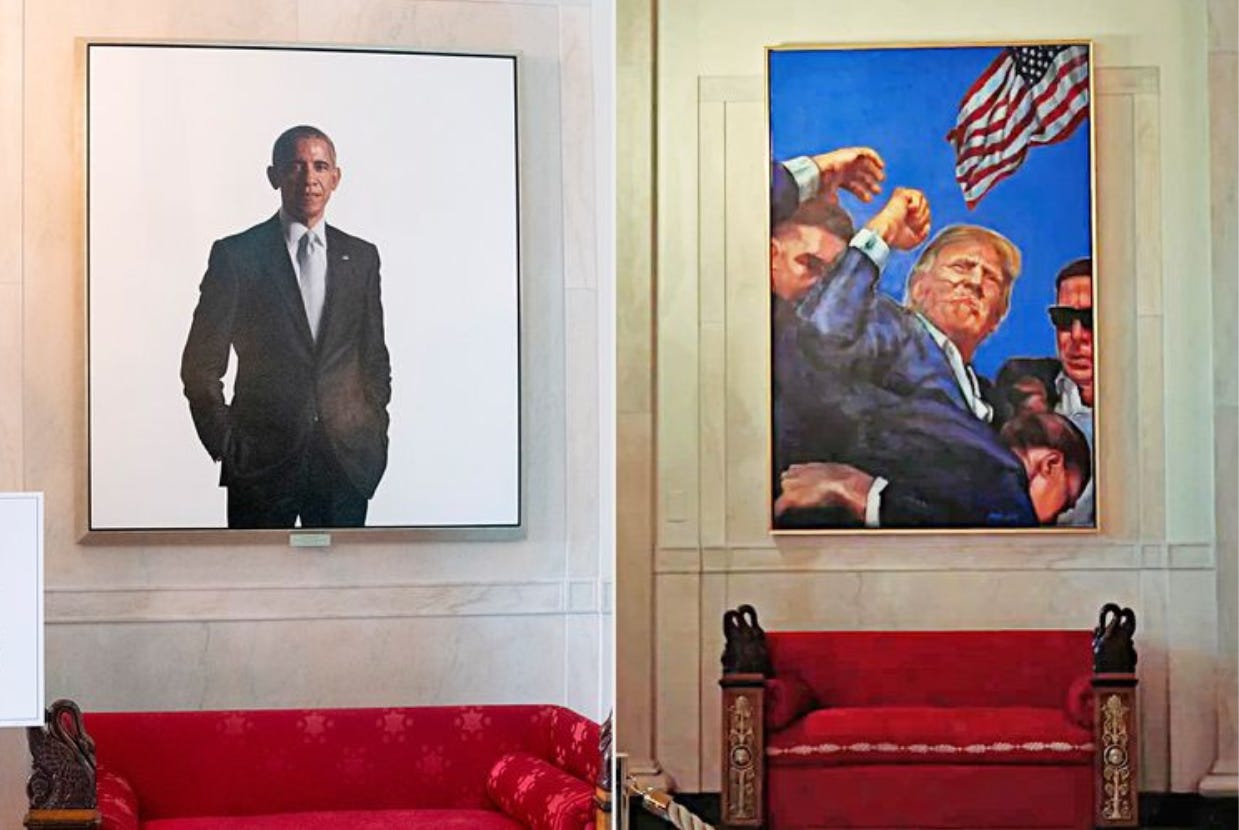
The newly installed painting of Trump pumping his fist in the air after the assassination attempt against him was painted by Marc Lipp, a south Florida pop artist who paints portraits of pop culture figures you might find in an uninspiring Wynwood Walls gallery, and it replaces Obama’s portrait painted by Robert McCurdy. Along with the framed newspaper front page showing Trump’s mugshot outside the Oval Office and a gold Trump crest installed over a door that the Wall Street Journal recently reported on, it’s par the course for a man who made his money in large part by licensing out his name and likeness. Trump’s always liked his physical environment to be self referential, and the White House increasingly reflects that with images he ran on during the 2024 campaign hanging on the walls.
Trump’s style is over-the-top maximalist, and that tendency continues. He’s flagmaxxing in the Oval Office with flags for every military branch, and portraitmaxxing with a dozen or so presidential portraits cramming the wall. Of the portrait on display of America’s first television president, Ronald Reagan, America’s second television president, Trump, told TV host Bill Maher on a recent visit, “you know the best thing about him? His hair.”
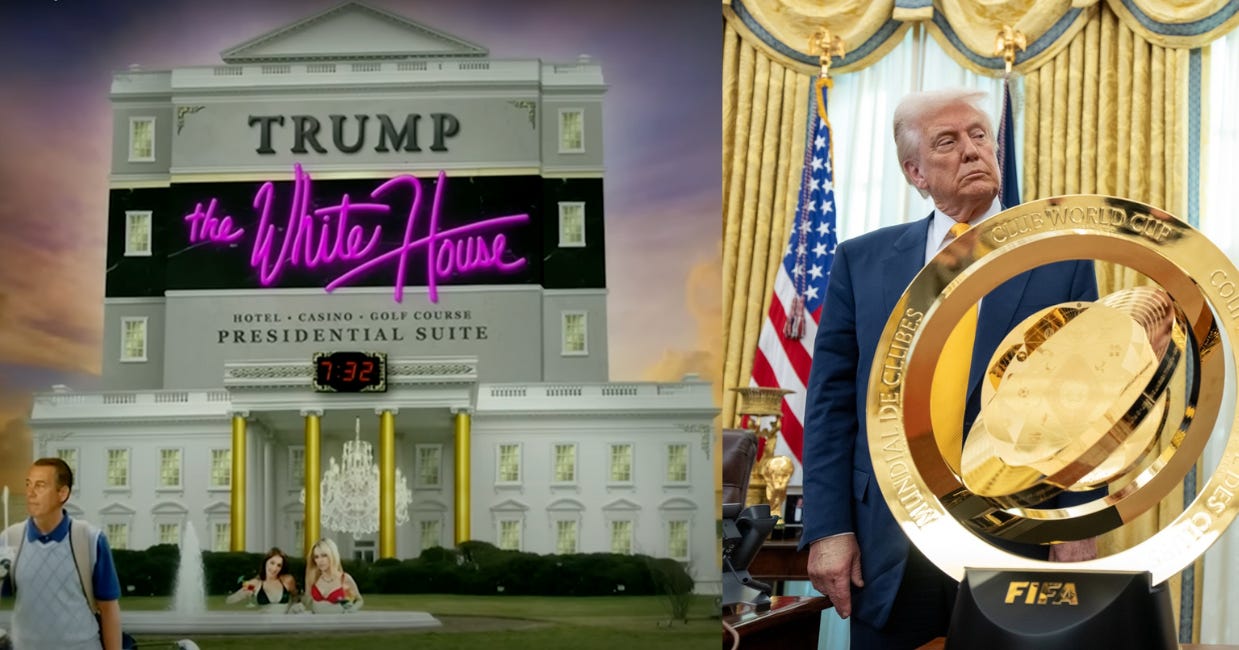
Image is everything, and Trump as an interior decorator is like a wizard building his Oz. In the Oval Office, he decorates with artifacts that marvel guests and wow audiences online and watching on TV. There’s a copy of the Declaration of Independence hidden behind a curtain. An obtuse golden trophy for the FIFA World Cup that’s designed like the metal orbit bodice Lady Gaga wore to promote the Monster Ball sits conspicuously by his desk and there’s an oversized penny, the currency he’s vowed to kill, behind him. His “Gulf of America” map is still there, and everything is gold.
“It’s the Golden Office for the Golden Age,” White House press secretary Karoline Leavitt told the Wall Street Journal for a story about John Icart, a south Florida cabinetmaker who did work for Mar-a-Lago before Trump tapped him to spruce up the White House with golden embellishments. Icart added gold carvings to the mantle and gold trim on the Oval Office’s crown molding. The gold cherubs were brought direct from Mar-a-Lago, and ivy that was once displayed on the mantle in past administrations has been replaced with golden trophies.
This is White House decor as if done by Biff Tannen, the high school bully in Back to the Future who became mayor of Hill Valley in an alternate timeline and lived in a branded casino called “Pleasure Paradise.” Or “Caesars Palace on the Potomac,” as New York Times columnist Maureen Dowd put it. During Trump’s first term, his most controversial decor decision was adding a portrait of Andrew Jackson to the Oval Office, but for his second term, he’s going much further and making it feel like home.
As Trump seeks to expand the powers of the presidency, ignoring court orders and Congress to impose his will on the state, his physical surroundings echo his political agenda. In redecorating the White House like a Trump property, Trump’s remade the most famous address in America in his image.
Previously in Yello:
The torch for the 2026 Winter Olympics was designed to show off the flame
The torches designed for Milano Cortina 2026, next year’s Olympic and Paralympic Winter Games in Italy, were made in service of the flame.
Named Essential, the reusable, ultra-minimalist torch has a flared, open-top design meant to show viewers how the flame is generated because “what’s important isn’t the torch, but the flame,” Italian architect and engineer Carlo Ratti tells me.
The design is meant to showcase the flame in motion. “The open-top design is crucial to how the flame comes to life,” explains Ratti, who designed the torch with his eponymous firm, Studio Carlo Ratti Associati. The torches were developed by Eni and Versalis, both official supporters of the Games, and the Italian manufacturer Cavagna Group engineered their production.
Each torch has an air intake near the upper cone that allows oxygen to mix with bio-gas, “generating a warmer, more natural yellow flame — one that aligns with the Olympic spirit far better than the cold, blue flame of many torches,” he says, adding that it was tested in wind tunnels and real-time trials.
“When the torch is in motion, that same openness helps produce what we call the ‘flag flame,’ a dynamic, horizontal flame that trails behind the torchbearer while running,” Ratti says.
The 2026 Games bills itself as the most widespread ever, since it’s the first Olympic Winter Games to be named for two cities, Milan and Cortina, and will be held across multiple regions in northern Italy. That’s a geographically big Olympics, but the design of the Essential torches communicates an opposite message of minimalism, of doing more with less.
The torches are lightweight, about 2 pounds each without their fuel canisters, which can be refilled and reused as many as 10 times. That reduces the overall number of torches that need to be produced for the 63-day Olympic Torch Relay, which begins this November 26, ahead of the Opening Ceremony on February 6, 2026.
The torches’ burners run on fuel made from renewable materials like cooking oil, and they’re made with recycled aluminum and brass alloy coated with a reflective, iridescent finish in two hues — a turquoise blue for the Olympic Games and a lustrous bronze for the Paralympics.
The accoutrements of the modern Olympic Games give host cities the chance to show off their culture, industries, and style. That’s a unique opportunity to showcase a state’s heritage on a global stage, such as the Paris 2024 medals, which included pieces of the Eiffel Tower. But it also puts a magnifying glass on design mishaps — such as those same medals having to be replaced due to deterioration.
For northern Italy, the Games are a chance to show off Milan’s status as a world leader in design. The torches were unveiled at both the Triennale di Milano, an art and design museum in Milan, and the Italian Pavilion in Expo 2025 Osaka in Japan.
Raffaella Paniè, director of brand, identity, and the “Look of the Games” for Milano Cortina 2026, says the torches are named Essential because they make the most of the bare minimum, allowing the flame to steal the show. This same minimalist approach is setting the stage for the rest of the Games’s aesthetics.
“If we consider Italian design, in line with our Italian spirit and wanting our brand to be vibrant, dynamic, and contemporary, we can expect future design elements, such as medals and the podium, to also reflect this aspect,” she says.
Have you seen this?
Takeaways from the new campaign finance reports. Fundraising reports filed Tuesday showed that donors are gravitating toward Democrats who have been outspoken in their opposition to Trump. [NBC News]
Judge rules Google holds illegal ad monopoly. A federal judge ruled Thursday that Google holds an illegal monopoly in two online advertising markets — the latest in a series of blows by Washington against the trillion-dollar tech giant. [Politico]
Starbucks has brand guidelines about its signature green color. Now that extends to employee dress. Starbucks’s small dress code update is part of its bigger branding play. [Fast Company]
History of political design
"Give a damn." button (ca. 1970s). This black-and-white button was produced by the New York Urban Coalition.
A portion of this newsletter was first published in Fast Company.
Like what you see? Subscribe for more:

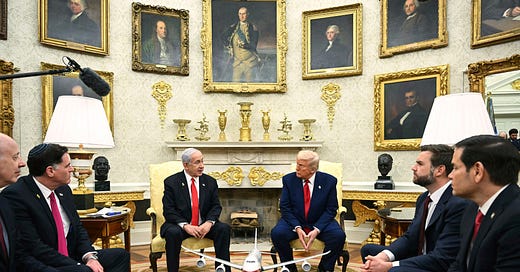




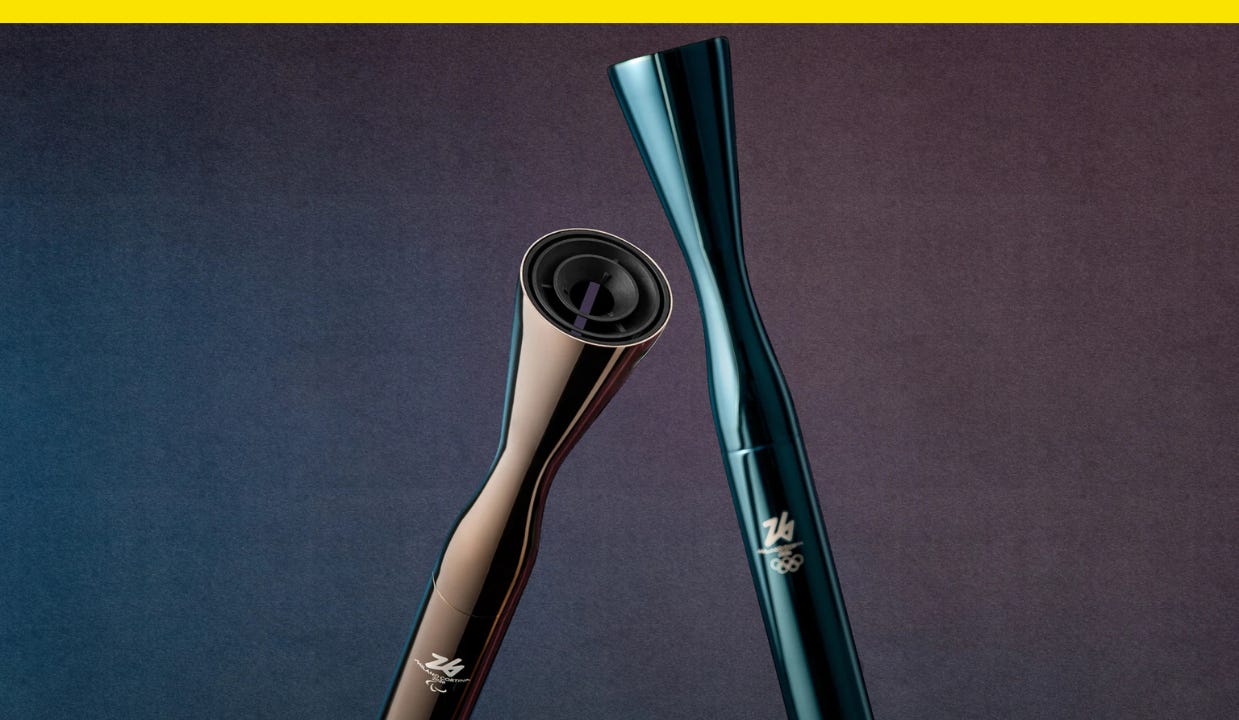
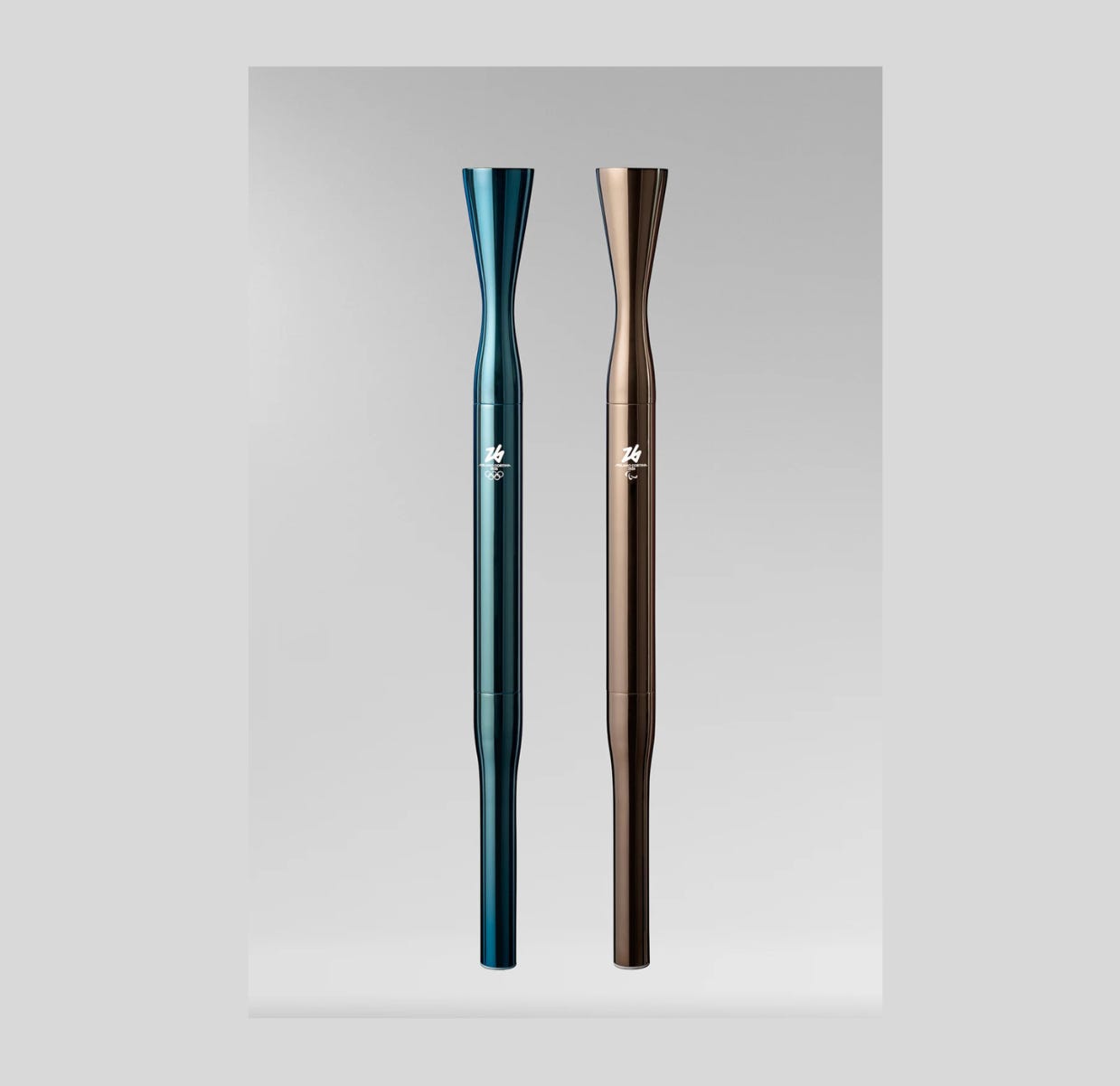
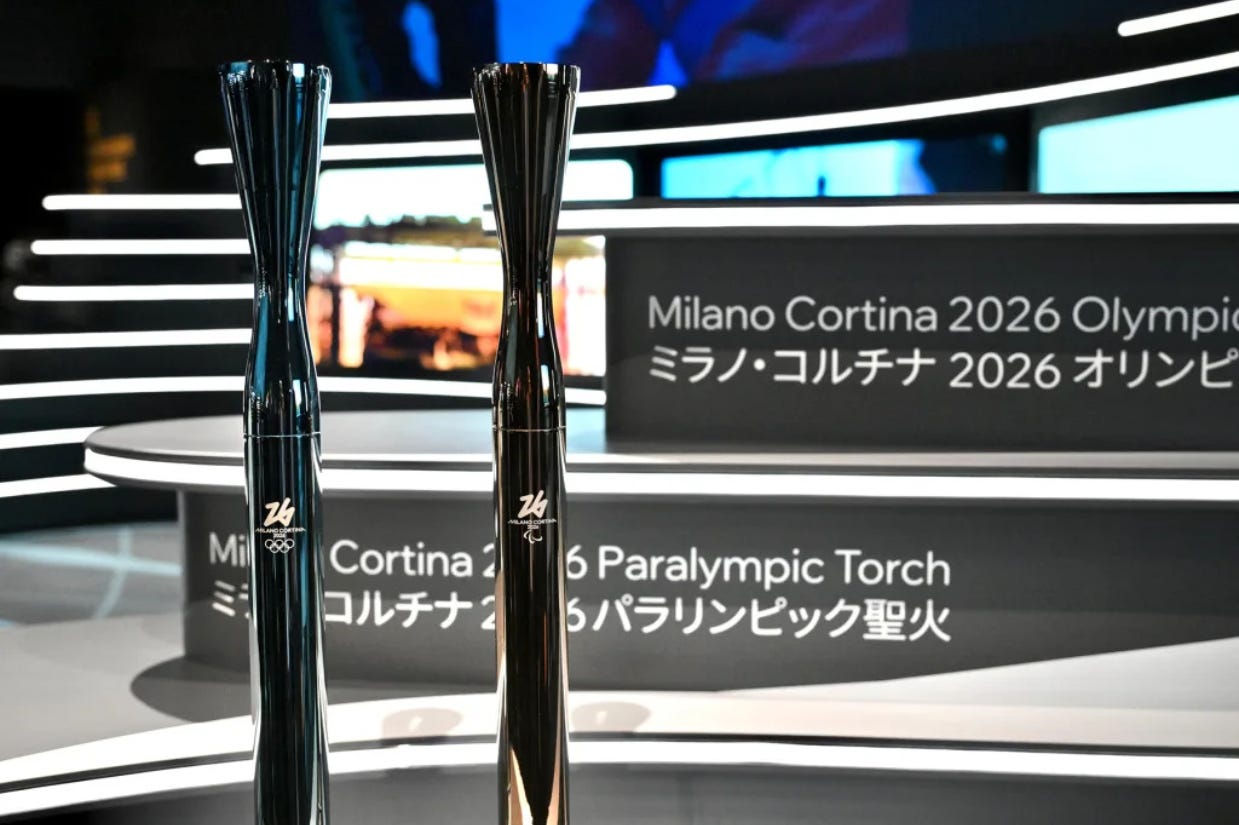

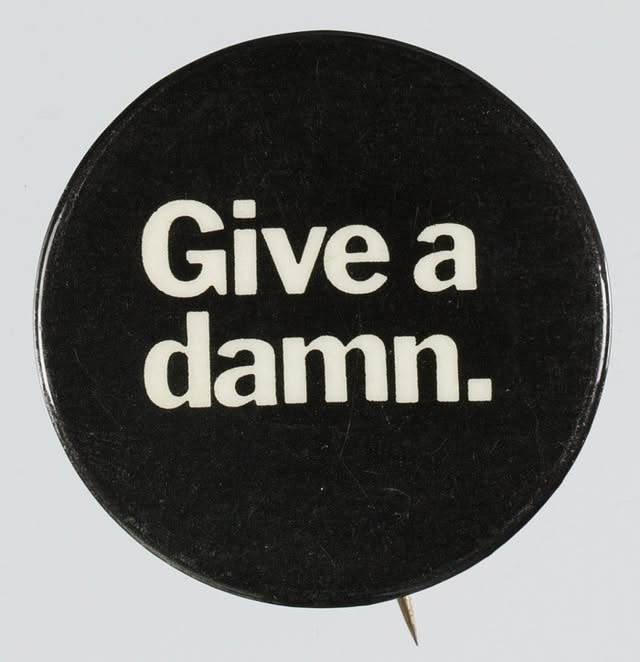
Fascinating. Your juxtaposition of 17th century cringe v. modern understated elegance describes this moment perfectly! Thanks :)